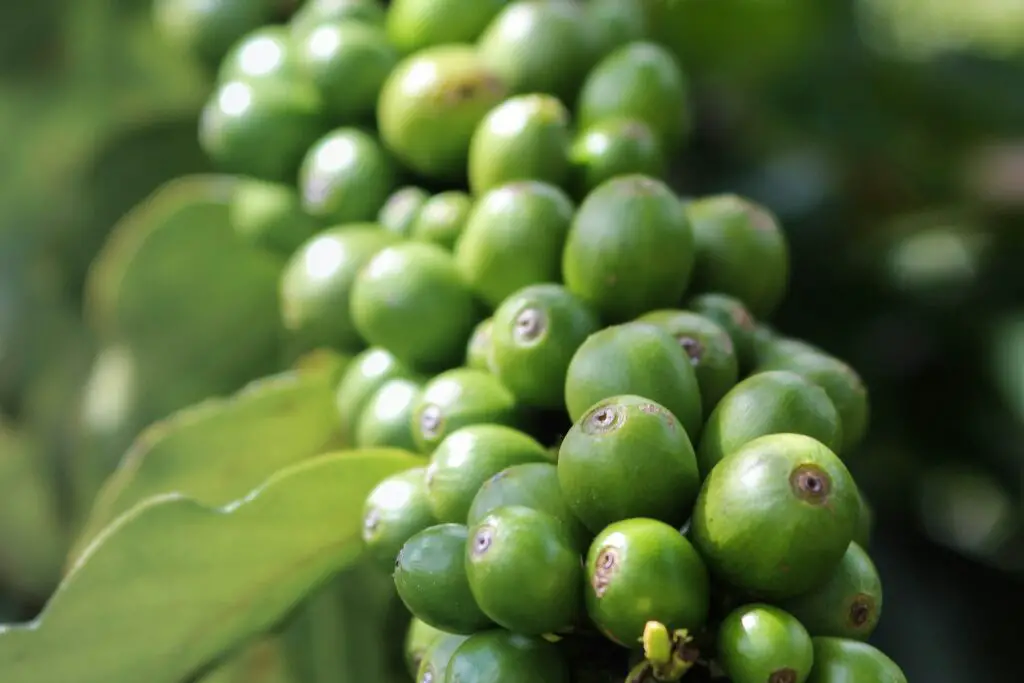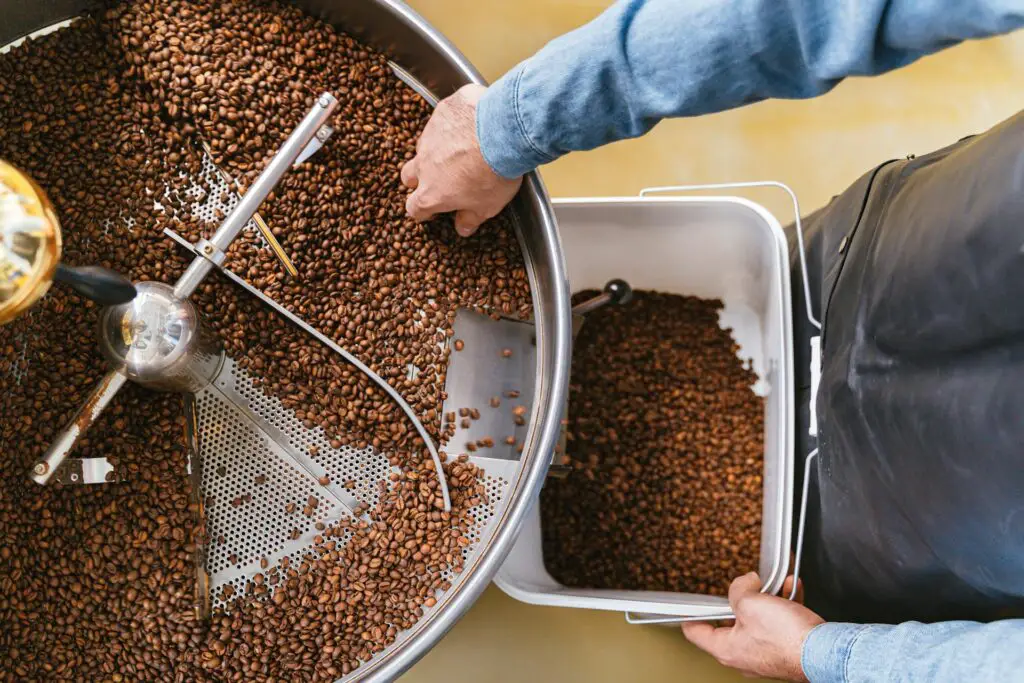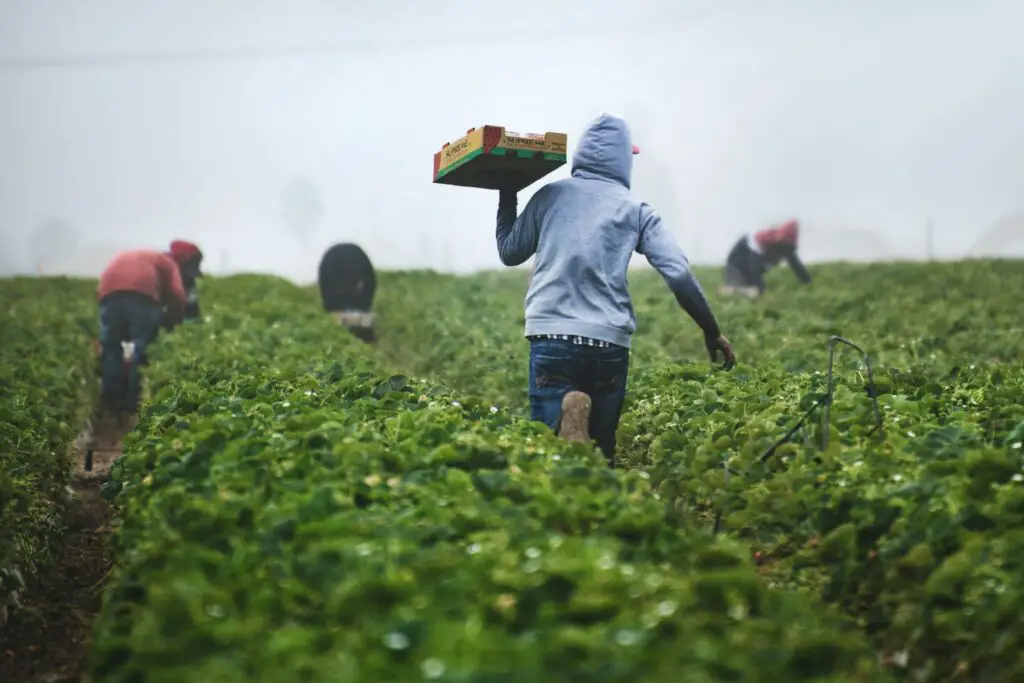Heirloom coffee beans are a treasure trove of flavors and history.
These beans, primarily from Ethiopia, offer a unique glimpse into the past and a taste experience unlike any other.
Understanding heirloom varieties is essential for appreciating the diversity and richness of the coffee world.
This guide explores what makes heirloom coffee special, dives into the diversity of Ethiopian heirloom varieties, and explains why traceability and sustainable practices are vital.

What is Heirloom Coffee?
Heirloom coffee refers to coffee varieties that have been cultivated and passed down through generations.
These beans are often grown in specific regions, traditionally by the same family or community.
The term “heirloom” is especially prevalent in Ethiopia, where coffee plants have thrived for centuries.
The history of heirloom coffee is deeply rooted in Ethiopia, the birthplace of coffee.
Coffee cultivation in Ethiopia dates back to ancient times, with wild coffee trees growing naturally in the forests.
From these origins, coffee spread globally, first to Yemen and then to other parts of the world.
Heirloom coffee stands out from other coffee varieties due to its genetic diversity and unique flavor profiles.
While many modern coffee varieties are cultivated for specific traits, heirloom coffees encompass a broad range of flavors, influenced by the diverse growing conditions in Ethiopia.
Unlike commonly known varieties such as Bourbon or Typica, heirloom coffees are often identified by their growing regions, like Jimma or Sidama.
The terminology around heirloom coffee has evolved over time.
Initially, “heirloom” was a catch-all term used to describe the diverse coffee varieties from Ethiopia.
However, as transparency and traceability in the coffee supply chain have improved, the term “landrace” is becoming more common.
Landrace refers to coffee varieties that have adapted to a specific region over time, reflecting their agricultural and environmental contexts.
The Diversity of Ethiopian Heirloom Coffee

As we mentioned earlier, Ethiopia is the birthplace of coffee.
This country is home to an incredible variety of coffee plants, with estimates ranging from 6,000 to 10,000 distinct varieties.
The genetic diversity of Ethiopian coffee is unmatched, contributing to its unique and rich flavor profiles.
Ethiopian coffee varieties can be divided into two main categories: regional landraces and JARC-improved varieties.
As we mentioned earlier, Regional landraces are coffee plants that have adapted to grow in specific regions over many generations.
These landraces often grow wild in Ethiopian forests, contributing to their unique characteristics.
Some well-known regions producing these landraces include Jimma, Yirgacheffe, and Sidama.
Each region’s coffee has distinct flavor notes influenced by local growing conditions.
For example, Yirgacheffe coffees are known for their floral and citrusy notes, while Sidama coffees often have fruity and wine-like flavors.
On the other hand, JARC-improved varieties are the result of research and development by the Jimma Agricultural Research Centre (JARC).
These varieties have been selectively bred for desirable traits such as disease resistance, yield, and cup quality.
There are about 40 JARC-improved varieties, each carefully developed to enhance specific characteristics while maintaining the rich diversity of Ethiopian coffee.
The development of JARC-improved varieties involves rigorous testing and selection processes.
Researchers at JARC collect and breed high-quality coffee varieties from local landraces, aiming to improve coffee cultivation and production.
This blend of traditional landraces and scientifically improved varieties ensures that Ethiopian coffee remains both diverse and high-quality.
Characteristics of Ethiopian Heirloom Coffee

The unique characteristics of Ethiopian heirloom coffee are greatly influenced by its growing conditions.
Factors like altitude, soil quality, shade, and rainfall play crucial roles in developing the distinctive flavors of these coffees.
Altitude affects the density of the coffee beans.
Higher altitudes, with cooler temperatures, slow the maturation process, resulting in beans with more complex flavors.
Soil quality, rich in nutrients, contributes to the unique taste profiles of the coffee.
The amount of shade and the distribution of rainfall also impact the development of the beans, influencing both their growth and flavor.
The flavor profiles of Ethiopian heirloom coffee vary significantly based on the processing methods used.
Here are three primary methods and their impact on flavor:
Natural or Dry-Processed Coffee
In this method, coffee cherries are dried with the fruit still attached to the bean.
This process allows the beans to absorb flavors from the fruit.
Natural processed coffees are often funky, sweet, and fruity, with rich berry and tropical fruit notes.
These coffees can have a heavy body and a complex, wine-like profile.
Fully Washed Coffee
Fully washed processing involves removing the fruit from the bean before drying.
This method emphasizes the bean’s intrinsic flavors, resulting in a cleaner and brighter cup.
Fully washed Ethiopian heirloom coffees tend to have higher acidity and a cleaner aftertaste.
They often exhibit floral, citrus, and tea-like notes, making them highly sought after for their clarity and brightness.
Honey Processed Coffee
Honey processing is a hybrid method that falls between natural and fully washed processing.
In this process, some of the mucilage (the sticky layer around the bean) is left on during drying.
This method imparts balanced flavors to the coffee.
Honey processed heirloom coffees can have a moderate acidity with sweet, syrupy, and fruity notes, offering a harmonious blend of the characteristics found in both natural and fully washed coffees.
Roasting Heirloom Coffee
Roasting heirloom coffee presents unique challenges due to the genetic diversity and irregularity of the beans.
Ethiopian heirloom coffee beans can vary widely in size and shape, even within the same batch.
This irregularity requires roasters to pay close attention to ensure even development and avoid under- or over-roasting parts of the batch.

Challenges in Roasting Due to Genetic Diversity and Bean Irregularity
The vast genetic diversity of Ethiopian heirloom coffee means that each variety reacts differently to heat.
Beans from different regions, and even different plants within the same region, can have varying moisture content and density.
This variability makes it difficult to apply a one-size-fits-all roasting profile.
Roasters must adapt their techniques to accommodate these differences, often requiring more frequent monitoring and adjustments during the roasting process.
Roasting Techniques for Different Regions and Processing Methods
The processing method used on the beans also significantly impacts how they should be roasted.
Natural processed beans, with their higher sugar content, tend to develop rich, fruity flavors and can handle higher temperatures.
Fully washed beans, on the other hand, often benefit from a slower, more controlled roast to preserve their bright acidity and clean flavors.
Honey processed beans, which fall somewhere in between, require a balanced approach to bring out their nuanced characteristics.
Adjusting Roast Profiles for Jimma vs. Yirgacheffe
Roasting heirloom coffees from different regions, such as Jimma and Yirgacheffe, requires distinct approaches.
Jimma coffees, known for their heavier body and complex flavor profiles, may need a longer development time to enhance their rich and bold characteristics.
In contrast, Yirgacheffe coffees, with their delicate floral and citrus notes, often require a lighter roast to preserve their subtle and intricate flavors.
Roasters must carefully adjust their profiles to highlight the best attributes of each region’s beans.
Importance of Cupping and Sensory Skills in Roasting Heirloom Coffee
Cupping and sensory skills are essential in the roasting process.
Cupping allows roasters to evaluate the coffee’s aroma, flavor, acidity, body, and aftertaste.
This practice helps identify the optimal roast profile for each batch of heirloom coffee.
Skilled roasters use their sensory abilities to detect even minor changes in the beans during roasting, making real-time adjustments to achieve the desired flavor profile.
The ability to taste and analyze coffee effectively is crucial for consistently producing high-quality roasted heirloom coffee.
The Significance of Traceability and Transparency
Traceability and transparency have become increasingly important in the world of Ethiopian heirloom coffee.
These practices help ensure that coffee producers, traders, and consumers have access to detailed information about the coffee’s journey from farm to cup.
Improved traceability enhances the quality and authenticity of the coffee, while transparency builds trust across the supply chain.

Improved Traceability in Ethiopian Coffee Production
In recent years, there has been a significant push to improve traceability in Ethiopian coffee production.
Historically, much of Ethiopia’s coffee was sold without specific information about its variety or origin.
However, with growing consumer demand for transparency, efforts have been made to provide more detailed information.
Improved traceability means that consumers can now know exactly where their coffee comes from, down to the specific region, farm, or even plot of land.
The Role of Organizations Like JARC and Nardos Coffee
Organizations like the Jimma Agricultural Research Center (JARC) and Nardos Coffee play a crucial role in advancing traceability and transparency.
JARC focuses on identifying and improving unique landraces, contributing to the genetic diversity and quality of Ethiopian coffee.
They conduct extensive research to develop new varieties that can thrive in specific regions, ensuring that these improvements are traceable back to their origins.
Nardos Coffee, on the other hand, supports over 4,000 farmers by providing coffee seedlings and technical assistance.
Their efforts help stabilize production and improve the traceability of coffee from farm to market.
By working closely with farmers, these organizations help ensure that every step of the coffee production process is documented and transparent.
The Shift from “Heirloom” to More Specific Classifications
As traceability and transparency improve, there has been a shift from using the broad term “heirloom” to more specific classifications of Ethiopian coffee varieties.
The term “heirloom” was once popularized for its marketing appeal but lacks scientific precision.
Today, there is a growing preference for using terms like “landraces” to describe the diverse, genetically distinct coffee varieties native to Ethiopia.
This shift reflects a deeper understanding and appreciation of the coffee’s agricultural and environmental contexts.
Regional Flavor Profiles
Two of the most notable regions, Guji and Sidamo, offer distinct taste experiences that showcase the rich variety of Ethiopian coffee.

Guji Heirlooms: Berry and Jam Notes
Guji is a region in southern Ethiopia known for producing some of the country’s most sought-after coffees.
The heirloom varieties from Guji are particularly renowned for their fruity flavors.
Coffee from this region often exhibits pronounced berry and jam notes.
These flavors are a result of the unique growing conditions in Guji, including its high altitude, fertile soil, and favorable climate.
The natural processing methods commonly used in Guji further enhance these fruity characteristics, creating a coffee that is both sweet and complex.
Guji heirlooms are a favorite among those who enjoy vibrant, fruit-forward coffees with a rich and full-bodied profile.
Sidamo Heirlooms: Floral and Apricot Flavors
Sidamo is another prominent coffee-growing region in Ethiopia, located to the southeast of the capital, Addis Ababa.
The heirloom coffees from Sidamo are distinctively different from those of Guji.
Sidamo heirlooms are known for their floral and apricot flavors.
The region’s coffees often have a bright acidity and a smooth, silky mouthfeel.
These characteristics are attributed to the region’s high elevation and the meticulous washed processing methods used by many farmers.
The floral notes in Sidamo coffee can range from jasmine to bergamot, while the apricot flavors add a delightful sweetness.
This combination makes Sidamo heirlooms particularly appealing to those who appreciate delicate and aromatic coffees with a clean finish.
Sustainable Practices in Heirloom Coffee Production
Sustainability is a crucial aspect of heirloom coffee production.
Ethical sourcing, environmentally friendly practices, and maintaining coffee freshness are all key elements that contribute to the overall sustainability of the coffee industry.

Ethical Sourcing and Its Importance
Ethical sourcing is fundamental in the heirloom coffee supply chain.
It ensures that coffee farmers receive fair compensation for their labor and produce.
By supporting fair trade and direct trade practices, coffee buyers can help improve the livelihoods of farmers and their communities.
Ethical sourcing also involves maintaining transparency in the supply chain, which allows consumers to make informed choices about the coffee they purchase.
This transparency builds trust and fosters long-term relationships between producers and buyers.
Sustainable High-Barrier Coffee Bags for Freshness
Preserving the freshness of heirloom coffee is vital to maintaining its unique flavors and quality.
Sustainable high-barrier coffee bags are an effective solution.
These bags are designed to protect coffee beans from exposure to oxygen, moisture, and light, which can degrade the coffee’s quality over time.
By using eco-friendly materials, such as biodegradable or recyclable options, these bags minimize environmental impact while ensuring that the coffee stays fresh.
This approach not only benefits the consumer but also supports environmental sustainability by reducing waste and promoting the use of renewable resources.
The Environmental and Social Impact of Sustainable Practices
Sustainable practices in heirloom coffee production have a significant positive impact on both the environment and local communities.
Environmentally friendly farming techniques, such as shade-grown coffee and organic farming, help preserve biodiversity and protect natural ecosystems.
These methods reduce the need for chemical fertilizers and pesticides, promoting soil health and reducing water pollution.
Socially, sustainable practices improve the quality of life for coffee farmers.
Fair wages, access to education, and healthcare are some of the benefits that come from ethical sourcing and sustainable farming initiatives.
These practices empower farmers, enabling them to invest in their communities and secure a better future for their families.
Conclusion
Ethiopian heirloom coffees are a testament to the rich history and incredible diversity of coffee.
From their unique regional flavors to the sustainable practices that support their production, heirloom varieties offer a fascinating and rewarding experience for coffee lovers.
As the coffee industry continues to evolve, the future of heirloom coffees looks promising, with ongoing efforts to improve traceability and sustainability.
Explore heirloom coffees and support sustainable practices to enjoy not only exceptional flavors but also contribute to a better future for coffee farming communities and the environment.


